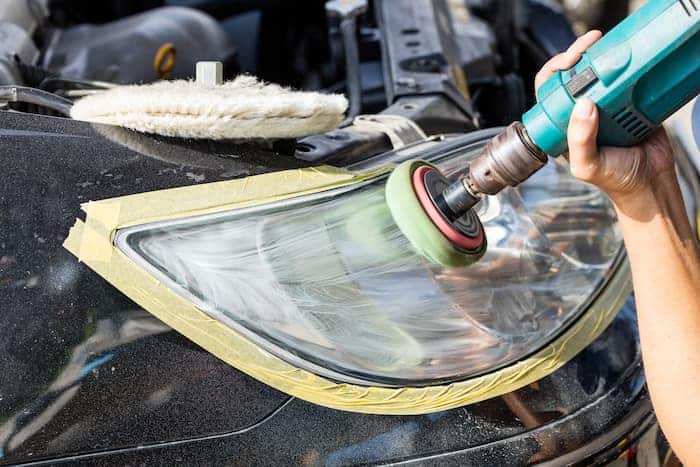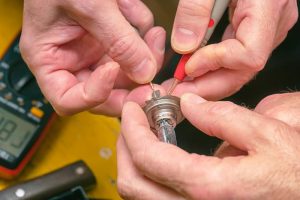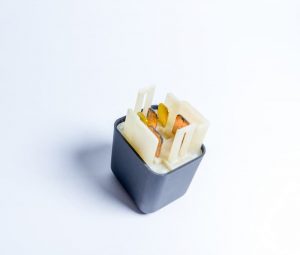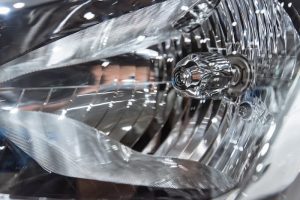A burned-out headlight is one of the most annoying things to have on a night or during an intense summer rainstorm. Your car’s headlights may, over time, become cloudy, dull, yellow, or scratched because of exposure to elements like sunshine, debris, and air pollution. But as soon as you discover hazy headlight lenses, you should replace or fix them. This can help you see better and drive safely with clear lighting and keep you up to date on car maintenance.
Until they cease working, you don’t frequently give your car’s headlights a second thought. You could feel like you were up a creek without a paddle then. There are some obvious indications that your headlamps will burn out, though. If you keep an eye out for these signs of a failing headlight, you should have plenty of time to fix the issue before you find yourself in the dark. Here are some indicators that your vehicle headlight will need to be replaced soon (and prevent the stress of a burned-out bulb).
Eight signs that your headlights need a replacement
- Cloudy or Hazy
Most automobiles have halogen reflector headlamps, which are shielded from damage by a clear protective coating. But several factors can damage the lens coating and cause your lights to get foggy, including salt, debris, and UV radiation. After a few years, these lens coverings grow cloudy and need to be thoroughly cleaned. Otherwise, they could obstruct your ability to see while driving, particularly at night or when it’s raining.
Check to determine if a clouded or foggy headlamp lens is to fault if you’re having problems seeing while driving. You should clean and coat the headlight lens with a headlight restoration kit to remove any film from the surface coatings or change the headlights.
- Dull or Yellow
Your headlights can get dim and yellow due to the weather and being clouded by the sun and rain. Depending on where and how you drive, as well as how often you park outside, your car’s headlights may begin to fail after just three to five years. Headlights produce just 22% of the light they did when their lens covers were brand new if they became yellow, hazy, or congealed.
However, a headlight restoration procedure is affordable to make your lights brighter and stop the yellowing process or change the headlights. You’ll see well and drive securely for years to come if you give your lights some much-needed maintenance.
- Scratched or Cracked
Rocks, debris, and minor accidents can quickly destroy the plastic lens of your car’s headlights. This occurs despite the protective cover on your lights because sunshine, air pollution, and other environmental factors erode the plastic covering.
Not only are scratches and other headlight flaws ugly, but they are also risky because they diminish the amount of light emitted and affect your visibility on the road. You can, however, sand and polish the lenses to cover any fractures in the protective covering by rebuilding your headlights or changing your headlights. This will help you in avoiding the possibility of moisture and debris entering the light and cracking the lens, which could result in an expensive repair.
- Difficult or Dangerous to Drive With
If you’re difficult to see when driving in the dark or the rain, you could be at a greater risk of getting into an accident. Furthermore, since 50% of car accidents occur at night, you and other drivers cannot afford to have your visibility compromised by dim or foggy headlights.
Make it a routine to inspect your lights for signs of wear and tear. Plan a headlight restoration service if your lenses appear clouded, yellow, or scratched or if you have trouble seeing the headlight bulb; better still, change the headlights. Your headlights can be effectively cleaned and sanded to improve efficiency and lessen glare (for you and other motorists). Then, regardless of where or when you drive, you’ll be able to do so more safely.

- Flickering Headlamps
Your car’s headlights can suddenly turn on and off, like a candle in the breeze. This is a typical indication that the headlight bulbs must be replaced. The filament of the light bulb will deteriorate with frequent, excessive use. Your headlamp will typically stop operating quickly when you first notice the flashing.
A damaged harness or a defective battery connection are additional causes of headlamp flickering. For instance, it’s unlikely that your headlight bulb needs to be replaced if you only bought a new car three years ago. Instead, inspecting the battery terminals for a loose connection would be best. Bring your car in for an examination at a service center if that doesn’t fix the issue. Act quickly to take advantage of it because your vehicle’s warranty might even cover the headlight repairs.
- Dim Headlamps
Your headlights, which were once dazzling, are now dull. Perhaps they are functioning, albeit infrequently and with varying intensities, until one day when they fade out and cease to exist. Over time, headlamp bulbs, especially older filament-type bulbs, might appear dimmer and lose their brilliance. This is a blatant sign that the bulb needs to be changed soon.
A corroded ground wire might also be the source of dim headlights. Follow the ground wire from the wiring harness and the back of the headlight assembly to its source to determine if this is the issue. You have to take your car to an auto body shop for repairs if anything seems to be corroded.
- Constantly Blowing Fuses
If you notice that your headlight bulbs are continuously going out, it may be a sign of a more serious electrical issue. Faulty headlight bulbs or bulbs with incorrect wattage can cause fuses to blow. The lighting switch, headlamp assembly, fuses, and any exposed wires in the harness must all be inspected.
High beams may also be the problem; if you’ve just changed the bulbs in your car’s high beams, compare the wattage of the new bulbs to the specifications in the owner’s manual. If everything checks OK, there might have been a problem with the installation of the bulb. In either case, it’s better to ask a qualified specialist for help.
- Low-Beams Don’t Work, But High-Beams Do
Replace the high-beam bulb with a low-beam bulb to solve this problem. The bulb is to blame if the low-beam bulb functions after the switch. If that still doesn’t work, you most likely have a blown fuse or a bad headlight relay. Look for any burned fuses, melted wires, or loose connections in the electrical area. A voltage multimeter can be used to test the headlight wiring as well.






